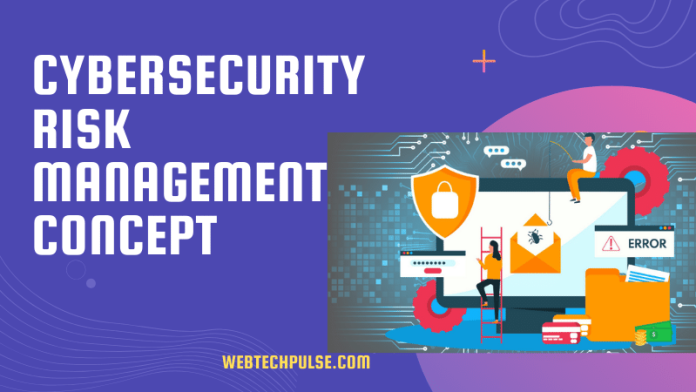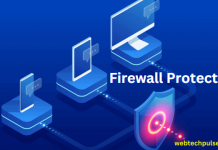Managing the cyber security risk across enterprises could be a very significantly difficult task and also requires a comprehensive and well-planned strategy on behalf of people. Due to the rapidly evolving threat landscape and increasing dependency on technology, organisations of all sizes and industries are facing a good number of risks associated with cyber security. Cybersecurity management is very critical to pay attention to nowadays because of regulatory compliance and business continuity, so things are very well sorted out.
What do you mean by the concept of cyber security risk management?
Cyber security risk management is the proactive process of identification, assessment and response to potential online threats to the organisation’s information systems. This will include a good number of activities like penetration testing, vulnerability assessment, incident response and reaction to the attack with security awareness training. Basically, this is a continuous process and should be revisited and updated regularly to improve the protection against the evolving tricks with the help of experts at Appsealing.
Some of the major benefits of introducing cyber security risk management have been explained as follows:
- This is a holistic approach: An effective holistic approach in this particular area will include the identification, assessment and mitigation of the risks so that everybody will be able to establish the priority with critical assets and systems in this area. Implementation of the appropriate controls in this case becomes easy for the countermeasure of mitigating the risks.
- Easy to map: Mapping this particular concept is a very easy task because it will focus on the identification and understanding of the assets with potential vulnerabilities in the industry so that things are very well sorted out. Exploitation, in this case, will be the bare minimum, and potential entry points for the attackers will be understood without any problem.
- Well-planned monitoring: This concept will be focusing on the technicalities of the ongoing surveillance of the IT environment of the company so that detection of suspicious activity will be very well done by implementing the security monitoring tools.
- Very easy to mitigate: This particular scenario will be very successful in terms of implementing security controls like a firewall and an antivirus system so that blocking the potential threats will be very well done, and the incident response plan will be very well implemented for the security incident. Management, in this case, will be very proficient in undertaking the security policies and procedures by conducting the audit and testing without any problem.
What is the process of creating the perfect risk management plan for the organisations?
- Identification of the assets: The very first step in this particular case will be based upon the identification of the assets of the organisation, including the critical system, potential entry point and sensitive data. This particular point is very important to be understood for the network structure of the organisations along with cloud-based services so that things are very well sorted out.
- Identification of the threats: The next step in this particular case will be to defy the potential threats along with organisational assets so that external threats can be understood and internal threats will be much costlier to the people.
- Identification of the consequences: The third step in this particular case will be to identify the potential consequences of the security incident, including data loss, damage to the image, and regulatory fines. If not paid attention, it can result in the loss of customer trust and negativity of the organisation’s image.
- Identification of the solutions: The fourth step in this particular process will be to notify the solutions of mitigation of control and the identification of the risks so that implementation of the security control will be very well done without any problem. Multifactor authentication, in this case, will provide people with the best level of support in terms of dealing with the threat of attacks without any issues.
- Implementing the solutions: The fifth step in this particular case will be to implement the identified solutions, which will be based upon configuring the security protocol, developing the incident response plan, and ultimately dealing with the security awareness training for the employees. This will be for the best implementation of the multi-factor authentication and the employee training in the whole process.
- Monitoring the progress and effectiveness: The final step in this particular case will be to monitor the progress and effectiveness of the implemented solutions, which will be definitely helpful in providing people with regular reviews of the logs along with conducting the assessment. Testing of the incident response plan in this case will be very well undertaken so that simulation exercises will provide people with the best level of support.
In addition to the above-mentioned points, every organisation must always focus on creating a comprehensive risk management security strategy, which is important for the identification, assessment and mitigation of cyber risks. The strategy in this particular case must always include clear policies and procedures for the identification, assessment and reporting of the risks. Security assessment, in this particular case, will definitely be helpful in evaluating things from a professional perspective and will provide people with a good factor of support over the internal penetration testing right from day one. Organisations in this particular case will definitely be able to undertake the social engineering assessment as well so that app security will be given proper priority right from day one. Hence, having a good understanding of the above-mentioned points with the enforcement of the strict security protocols is a good idea so that data in transit as well as at rest will be very well made safe and secure and further the potential impact of the security incident will be the bare minimum. This particular solution will be perfect for developers in companies interested in keeping their applications safe and secure because it will ultimately be based on a robust tool that will offer a significant variety of features against the latest threats.












